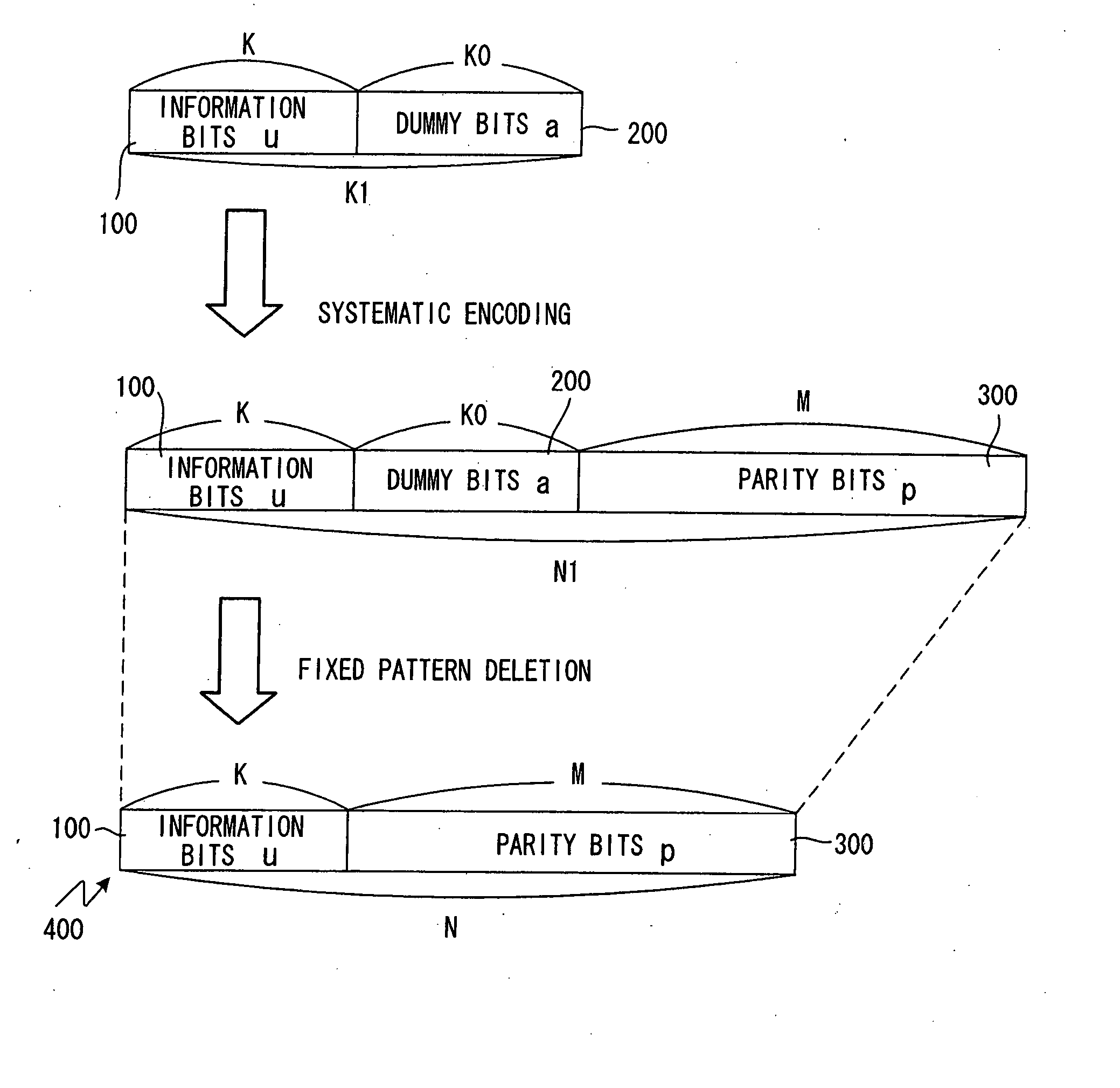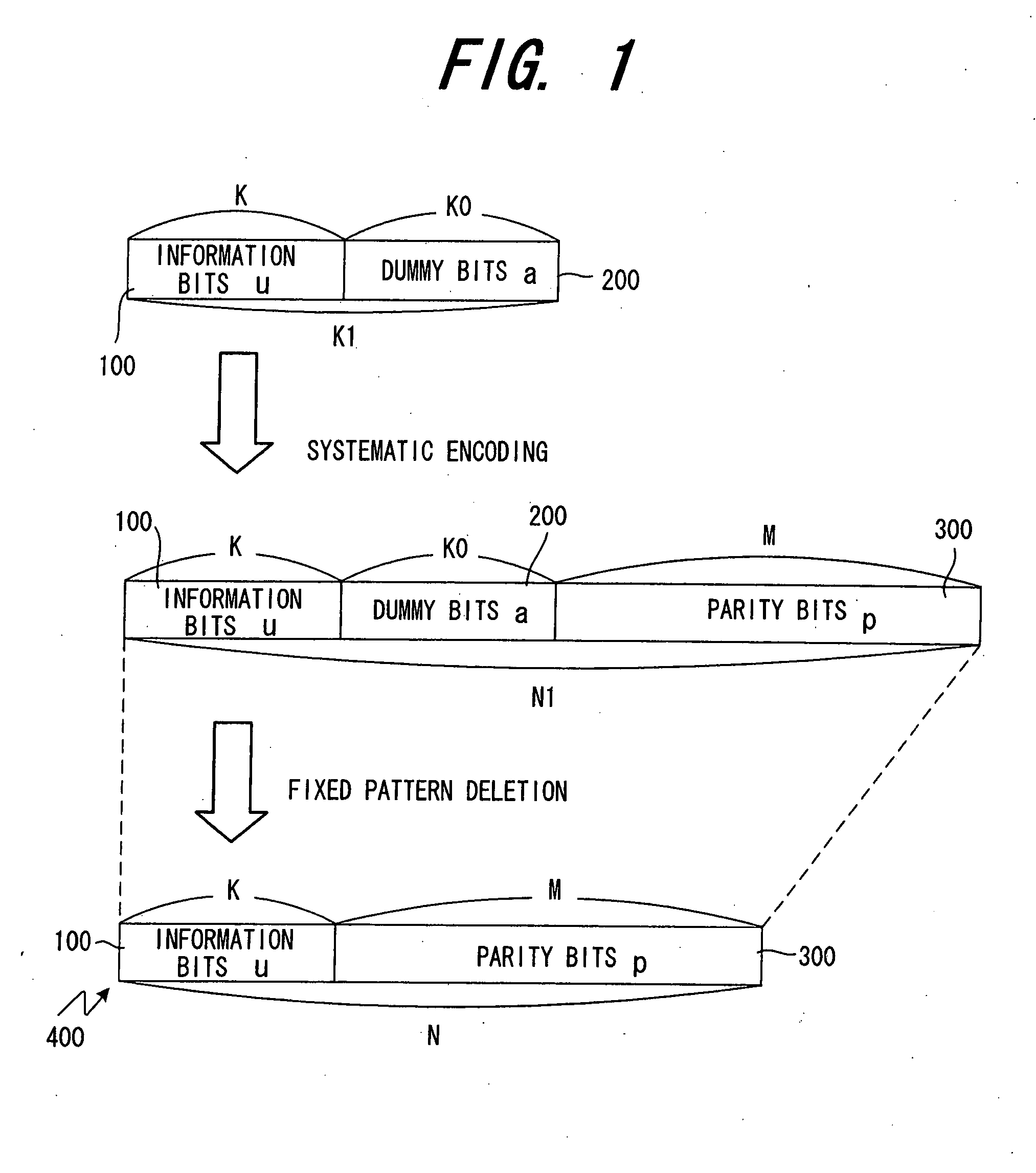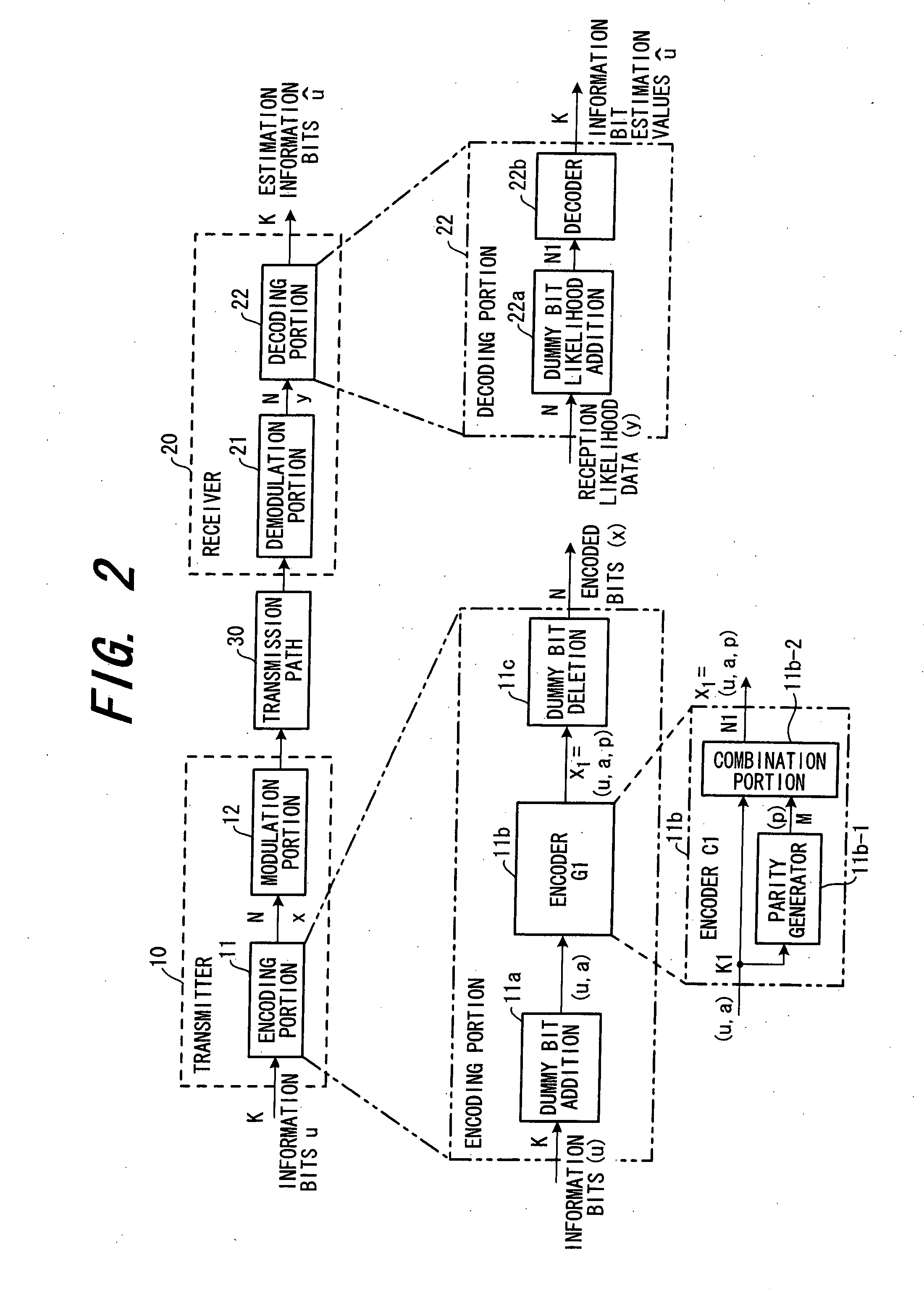Encoding method, decoding method, and devices for same
- Summary
- Abstract
- Description
- Claims
- Application Information
AI Technical Summary
Benefits of technology
Problems solved by technology
Method used
Image
Examples
first embodiment
(A) First Embodiment
[0110] (a) Encoding Method
[0111]FIG. 1 explains an encoding method in a system to transmit and receive data using a systematic code, formed by adding parity alphabet elements to information alphabet elements. In the following explanation it is assumed that q=2, and in place of the term “alphabet”, the word “bit” is used; however, this invention is not limited to the case q=2.
[0112] K0 dummy bits in a prescribed pattern 200 are added to K information bits 100 to form K1 (=K+K0) information bits. The dummy bits are not limited to specific patterns such as an all-“1”s pattern or an all-“0”s pattern or a pattern such as 1010 . . . 10 which alternates “1”s and “0”s, and any prescribed pattern can be used. This is similarly true for all of the following embodiments as well.
[0113] Next, M parity bits 300, created using the K1 (=K+K0) information bits, are added to the K1 information bits to generate Ni (=K1+M) information bits (systematic encoding). Then, K0 dummy bi...
second embodiment
(B) Second Embodiment
[0176] In FIG. 1; a case in which dummy bits 200 are added randomly to information bits 100 was explained; more specifically, addition can be performed as follows. (A) of FIG. 10 is an example in which dummy-bits 200 are added all at once after information bits 100; (B) of FIG. 10 is an example in which dummy bits 200 are added all at once before information bits 100; and (C) of FIG. 10 is an example in which dummy bits 200 are added substantially uniformly to the information bits 100. Here, “substantially uniformly” means that there is no or almost no bias. As a method to add dummy bits substantially uniformly, for example, the rate-match pattern algorithm stipulated in 3GPP W-CDMA can be used to determine positions and add dummy bits. As a result of the dummy bit positions, the code characteristics change.
[0177] In particular, when an irregular LDPC code is used, among the columns of the check matrix H1 corresponding to the dummy bits, columns of the same wei...
third embodiment
(C) Third Embodiment
[0183] The code characteristics change depending on the dummy bit addition positions. For this reason, in the third embodiment the optimum dummy bit addition positions for an LDPC code are determined, and dummy bits are added at these positions.
[0184] The check matrix H1 when a fixed code is added is an M×N1 matrix, as shown in (C) of FIG. 3. Here M=N−K, and N1=N+K0. The check matrix H′ with no dummy bits added is the M×N matrix resulting by deletion of the QT portion from the check matrix H1. If an ideal situation is assumed, the encoding method of the first embodiment, in which dummy bits are inserted and encoding is performed, is no different in terms of characteristics from a method of deleting the columns (the QT portion) corresponding to the dummy bits from the check matrix H1, and using the M×N check matrix H′ thus obtained to decode the received N likelihood data items y.
[0185] Hence as shown in FIG. 13, when the known weight distribution of the N1×M ch...
PUM
 Login to View More
Login to View More Abstract
Description
Claims
Application Information
 Login to View More
Login to View More - R&D
- Intellectual Property
- Life Sciences
- Materials
- Tech Scout
- Unparalleled Data Quality
- Higher Quality Content
- 60% Fewer Hallucinations
Browse by: Latest US Patents, China's latest patents, Technical Efficacy Thesaurus, Application Domain, Technology Topic, Popular Technical Reports.
© 2025 PatSnap. All rights reserved.Legal|Privacy policy|Modern Slavery Act Transparency Statement|Sitemap|About US| Contact US: help@patsnap.com



